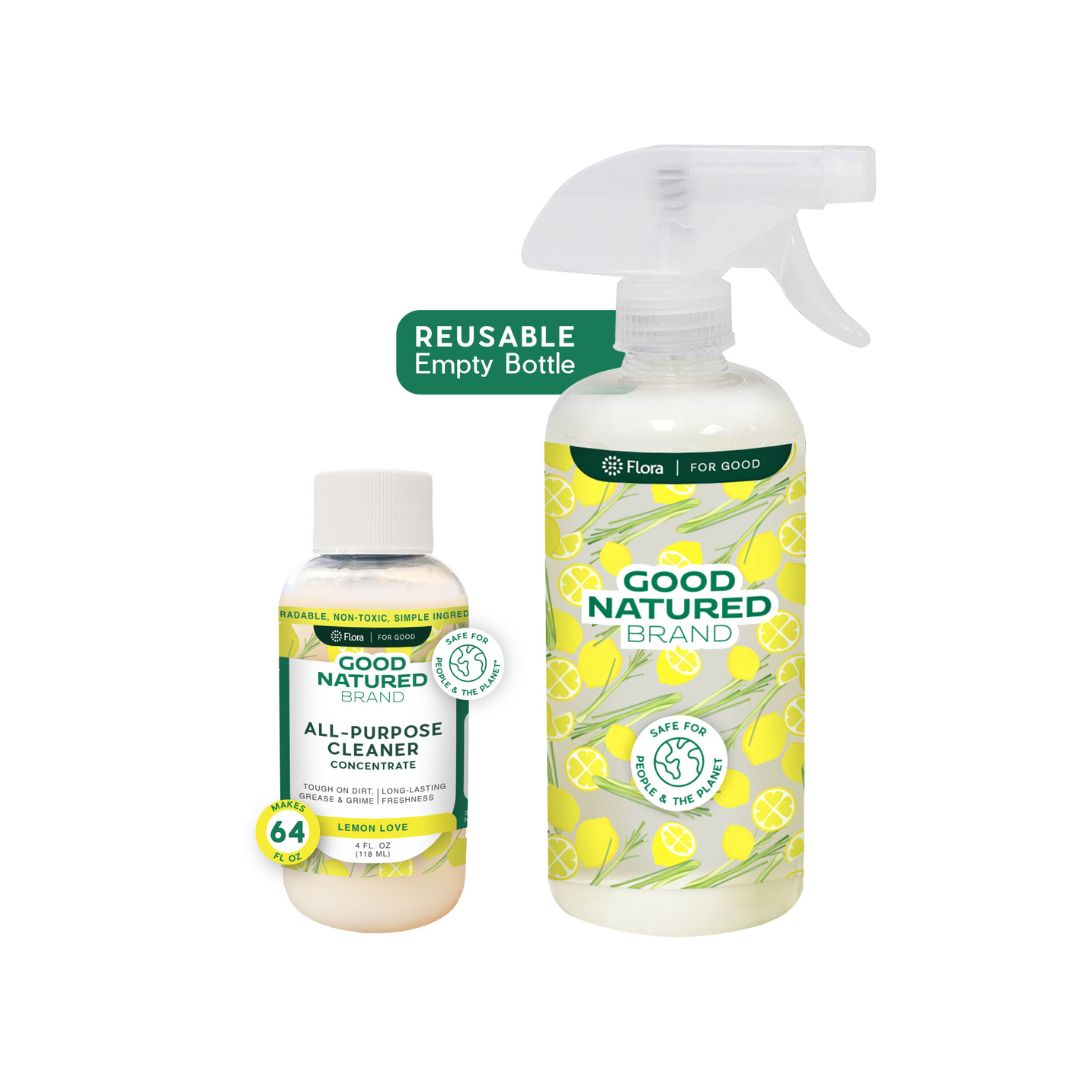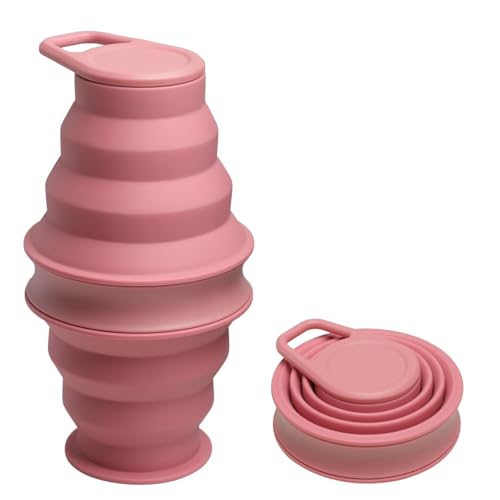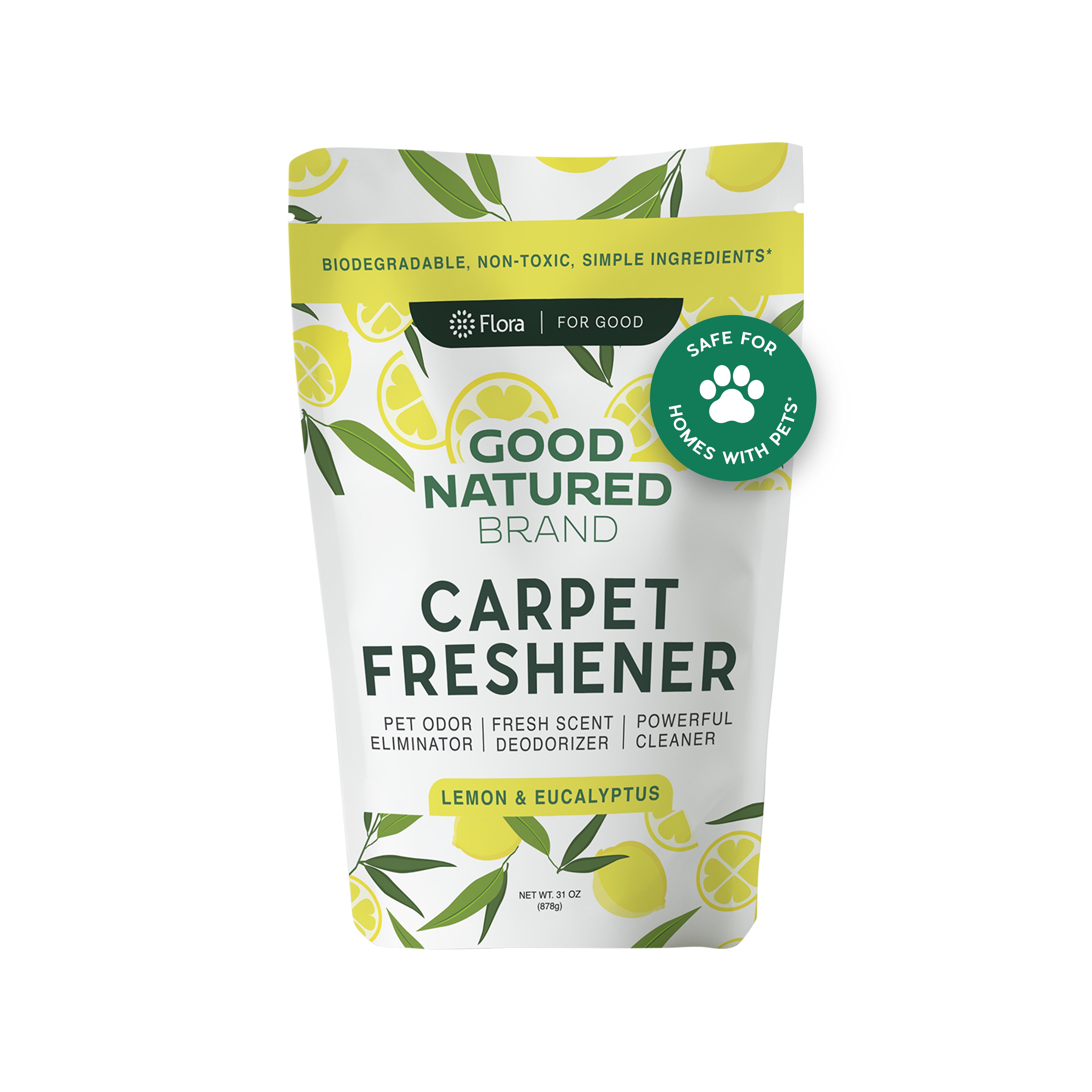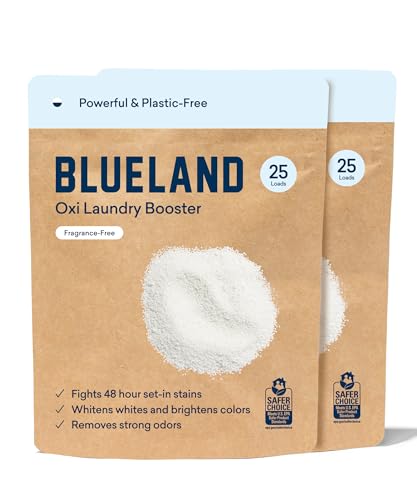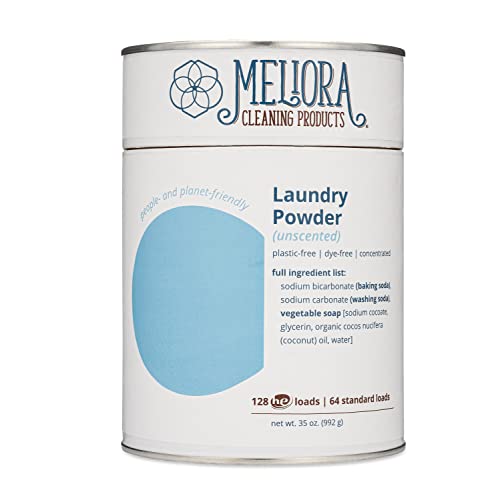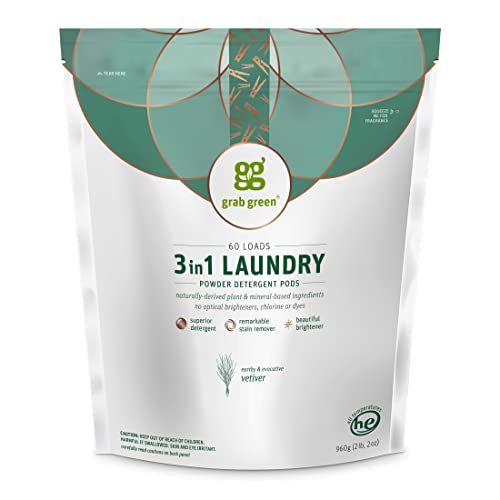
Grab Green Laundry Detergent Pods - Superior Stain Remover, Vetiver Scent, 60 Count


Citric Acid
Medium RiskCitric acid is an alpha hydroxy acid used in personal care products primarily for its role as a pH adjuster and natural preservative. It occurs naturally in citrus fruits and is commonly utilized in various formulations for its chelating properties and mild exfoliation benefits.
Sustai Insights
Citric acid offers functional benefits as an effective preservative and pH stabilizer, contributing to product longevity and stability. It is biodegradable and derived from renewable sources. Health risks are low, with minimal concerns regarding carcinogenicity, allergies, and reproductive toxicity. However, moderate use restrictions exist due to potential irritation at high concentrations. Environmental risks are limited, as citric acid is not known to accumulate in ecosystems. Regulatory agencies have no significant advisories against its use. Overall, it is assessed as a medium-risk ingredient, with safe usage practices recommended and alternatives available.
Sodium Metasilicate
Medium RiskSodium metasilicate is an inorganic salt commonly used in cleaning products and detergents as a pH regulator and a corrosion inhibitor. It contributes to the effectiveness of formulations by enhancing cleaning power and preventing scale formation.
Sustai Insights
Sodium metasilicate offers functional benefits as a pH regulator and corrosion inhibitor, enhancing cleaning efficacy in various products. However, it has a moderate allergenic potential and can cause skin and eye irritation. Its environmental impact includes potential pollution concerns, although it is not classified as bioaccumulative. Regulatory assessments indicate low restrictions on its use, but caution is advised due to its irritant properties. Overall, the ingredient presents a medium risk profile, warranting safe usage practices and consideration of alternatives such as less irritating pH regulators.
Polyvinyl Alcohol
Low RiskPolyvinyl alcohol is a synthetic polymer used in various applications, including adhesives, coatings, and as a film-forming agent in personal care products. It is known for its water-solubility and ability to create protective films.
Sustai Insights
Polyvinyl alcohol offers functional benefits as an effective film-former and emulsifier, and it is considered to have low health risks, with no significant concerns regarding carcinogenicity, allergies, or reproductive toxicity. Environmentally, it does not bioaccumulate and has low pollutant potential. Regulatory bodies have not imposed severe restrictions on its use. Despite its beneficial attributes, it is advisable to follow safe usage practices, particularly for sensitive populations. Overall, polyvinyl alcohol is assessed as low risk.
Sodium Sulfate
Low RiskSodium sulfate is an inorganic salt commonly used in various personal care products. It functions primarily as a bulking agent, helping to improve texture and stability. Sodium sulfate is often found in formulations for its ability to enhance the solubility of other ingredients.
Sustai Insights
Sodium sulfate presents functional benefits as a bulking agent, contributing to product consistency without significant health risks, as it is classified with low concerns for carcinogenicity, allergies, and developmental toxicity. There are no notable environmental hazards associated with its use, and it is not currently restricted by regulatory bodies such as the FDA. Overall, the risk level for sodium sulfate is considered low, making it a safe ingredient in personal care products. Alternatives are available but may not provide identical functional benefits.
Sodium Citrate
Low RiskSodium citrate is used in cosmetic formulations primarily as a buffering agent, helping to stabilize pH levels. It is derived from citric acid and is commonly found in various personal care products to enhance their efficacy and stability.
Sustai Insights
Sodium citrate offers functional benefits such as effective pH regulation and acts as a mild preservative. It is generally recognized as safe with low risks for cancer, allergies, and reproductive toxicity. Environmental concerns are minimal, with no significant pollutant potential or bioaccumulation. Regulatory bodies like the FDA and COSMOS have no major restrictions on its use. Overall, sodium citrate presents a low risk, making it a viable ingredient in cosmetic formulations. Safe usage practices should be followed, and alternatives are not typically necessary.
C9 11 Pareth 6
Low RiskC9-11 Pareth-6 is a polyethylene glycol ether derived from natural and synthetic sources, primarily used as a surfactant and emulsifier in cosmetic formulations. It aids in stabilizing products and enhancing texture, making it common in personal care items such as shampoos and lotions.
Sustai Insights
C9-11 Pareth-6 serves effectively as a surfactant and emulsifier, contributing to product stability and texture. It has low associations with known health risks, including carcinogenicity, allergies, and reproductive toxicity. Environmentally, it poses minimal pollution risk and is not bioaccumulative. Regulatory bodies do not classify it as restricted, indicating a low risk level. Safe usage practices should be observed, and while no direct alternatives are necessary, natural emulsifiers may be explored for sustainability. Overall, the ingredient is assessed as low risk.
Sodium Sesquicarbonate
Low RiskSodium sesquicarbonate is an inorganic salt commonly used in various products, including personal care and cleaning formulations. It acts as a buffering agent, helping to regulate pH levels and enhance the performance of other ingredients in the formulation.
Sustai Insights
Sodium sesquicarbonate offers functional benefits as a buffering agent, effectively stabilizing pH in formulations. It is recognized for its low allergenic potential and minimal health risks, though it can cause irritation upon skin or eye contact. Environmentally, it is not considered a significant pollutant, maintaining a low risk profile overall. Regulatory agencies have not imposed restrictions on its use. Safe application practices should be observed, especially to avoid irritation, and while alternatives exist, they may not offer the same buffering capabilities. Thus, the overall risk level associated with sodium sesquicarbonate remains low.
Bornanedione
Low RiskBornanedione is an organic compound that serves various functions in products, primarily in the realm of fragrance and flavoring agents. Its use is regulated, and it is not currently listed among restricted substances in skin contact applications, suggesting a generally accepted safety profile.
Sustai Insights
Bornanedione offers functional benefits as a flavoring agent without significant health risks, including low concerns for carcinogenicity, allergenicity, and reproductive toxicity. Environmentally, it poses minimal risks, with no evidence of bioaccumulation or pollution. Regulatory bodies do not impose notable restrictions. Overall, the ingredient presents a low risk profile, making it a safe choice in formulations.
Sodium Bicarbonate
Low RiskSodium bicarbonate, commonly known as baking soda, is an inorganic compound with the formula NaHCO₃. It functions primarily as a leavening agent in baking, helping to produce carbon dioxide gas when it reacts with acids, thereby causing dough to rise. It also serves as a mild alkaline agent in various personal care products.
Sustai Insights
Sodium bicarbonate is valued for its effectiveness as a leavening agent and its role in neutralizing acidity, contributing to product stability. It is considered environmentally friendly and biodegradable. Health risks are minimal, with low concerns regarding carcinogenicity, allergies, and reproductive toxicity. It is not classified as a pollutant and poses no significant environmental hazards. Regulatory assessments indicate it is safe for use in food and cosmetic products. Overall, sodium bicarbonate carries a low risk, making it a practical choice in many applications.
Hydrated Silica
Low RiskHydrated silica is a form of silicon dioxide that appears as a fine, white powder. It is commonly used in cosmetic products for its thickening, anti-caking, and absorbent properties, enhancing product texture and stability.
Sustai Insights
Hydrated silica serves as an effective thickening agent and absorbent, contributing to product stability. It has a low potential for health risks, with minimal concerns regarding carcinogenicity, allergies, or reproductive toxicity. Environmental risks are also low, with no significant bioaccumulation or pollution concerns. Regulatory bodies do not impose major restrictions, classifying it as low-risk overall. For safe usage, it is recommended to follow product instructions. Alternatives include more natural thickeners like xanthan gum for sustainable formulations.
Polyvinyl Alcohol
Low RiskPolyvinyl alcohol is a synthetic polymer used in various applications, including adhesives, coatings, and as a film-forming agent in personal care products. It is known for its water-solubility and ability to create protective films.
Sustai Insights
Polyvinyl alcohol offers functional benefits as an effective film-former and emulsifier, and it is considered to have low health risks, with no significant concerns regarding carcinogenicity, allergies, or reproductive toxicity. Environmentally, it does not bioaccumulate and has low pollutant potential. Regulatory bodies have not imposed severe restrictions on its use. Despite its beneficial attributes, it is advisable to follow safe usage practices, particularly for sensitive populations. Overall, polyvinyl alcohol is assessed as low risk.
Sodium Sulfate
Low RiskSodium sulfate is an inorganic salt commonly used in various personal care products. It functions primarily as a bulking agent, helping to improve texture and stability. Sodium sulfate is often found in formulations for its ability to enhance the solubility of other ingredients.
Sustai Insights
Sodium sulfate presents functional benefits as a bulking agent, contributing to product consistency without significant health risks, as it is classified with low concerns for carcinogenicity, allergies, and developmental toxicity. There are no notable environmental hazards associated with its use, and it is not currently restricted by regulatory bodies such as the FDA. Overall, the risk level for sodium sulfate is considered low, making it a safe ingredient in personal care products. Alternatives are available but may not provide identical functional benefits.
Sodium Citrate
Low RiskSodium citrate is used in cosmetic formulations primarily as a buffering agent, helping to stabilize pH levels. It is derived from citric acid and is commonly found in various personal care products to enhance their efficacy and stability.
Sustai Insights
Sodium citrate offers functional benefits such as effective pH regulation and acts as a mild preservative. It is generally recognized as safe with low risks for cancer, allergies, and reproductive toxicity. Environmental concerns are minimal, with no significant pollutant potential or bioaccumulation. Regulatory bodies like the FDA and COSMOS have no major restrictions on its use. Overall, sodium citrate presents a low risk, making it a viable ingredient in cosmetic formulations. Safe usage practices should be followed, and alternatives are not typically necessary.
C9 11 Pareth 6
Low RiskC9-11 Pareth-6 is a polyethylene glycol ether derived from natural and synthetic sources, primarily used as a surfactant and emulsifier in cosmetic formulations. It aids in stabilizing products and enhancing texture, making it common in personal care items such as shampoos and lotions.
Sustai Insights
C9-11 Pareth-6 serves effectively as a surfactant and emulsifier, contributing to product stability and texture. It has low associations with known health risks, including carcinogenicity, allergies, and reproductive toxicity. Environmentally, it poses minimal pollution risk and is not bioaccumulative. Regulatory bodies do not classify it as restricted, indicating a low risk level. Safe usage practices should be observed, and while no direct alternatives are necessary, natural emulsifiers may be explored for sustainability. Overall, the ingredient is assessed as low risk.
Citric Acid
Medium RiskCitric acid is an alpha hydroxy acid used in personal care products primarily for its role as a pH adjuster and natural preservative. It occurs naturally in citrus fruits and is commonly utilized in various formulations for its chelating properties and mild exfoliation benefits.
Sustai Insights
Citric acid offers functional benefits as an effective preservative and pH stabilizer, contributing to product longevity and stability. It is biodegradable and derived from renewable sources. Health risks are low, with minimal concerns regarding carcinogenicity, allergies, and reproductive toxicity. However, moderate use restrictions exist due to potential irritation at high concentrations. Environmental risks are limited, as citric acid is not known to accumulate in ecosystems. Regulatory agencies have no significant advisories against its use. Overall, it is assessed as a medium-risk ingredient, with safe usage practices recommended and alternatives available.
Sodium Sesquicarbonate
Low RiskSodium sesquicarbonate is an inorganic salt commonly used in various products, including personal care and cleaning formulations. It acts as a buffering agent, helping to regulate pH levels and enhance the performance of other ingredients in the formulation.
Sustai Insights
Sodium sesquicarbonate offers functional benefits as a buffering agent, effectively stabilizing pH in formulations. It is recognized for its low allergenic potential and minimal health risks, though it can cause irritation upon skin or eye contact. Environmentally, it is not considered a significant pollutant, maintaining a low risk profile overall. Regulatory agencies have not imposed restrictions on its use. Safe application practices should be observed, especially to avoid irritation, and while alternatives exist, they may not offer the same buffering capabilities. Thus, the overall risk level associated with sodium sesquicarbonate remains low.
Bornanedione
Low RiskBornanedione is an organic compound that serves various functions in products, primarily in the realm of fragrance and flavoring agents. Its use is regulated, and it is not currently listed among restricted substances in skin contact applications, suggesting a generally accepted safety profile.
Sustai Insights
Bornanedione offers functional benefits as a flavoring agent without significant health risks, including low concerns for carcinogenicity, allergenicity, and reproductive toxicity. Environmentally, it poses minimal risks, with no evidence of bioaccumulation or pollution. Regulatory bodies do not impose notable restrictions. Overall, the ingredient presents a low risk profile, making it a safe choice in formulations.
Sodium Metasilicate
Medium RiskSodium metasilicate is an inorganic salt commonly used in cleaning products and detergents as a pH regulator and a corrosion inhibitor. It contributes to the effectiveness of formulations by enhancing cleaning power and preventing scale formation.
Sustai Insights
Sodium metasilicate offers functional benefits as a pH regulator and corrosion inhibitor, enhancing cleaning efficacy in various products. However, it has a moderate allergenic potential and can cause skin and eye irritation. Its environmental impact includes potential pollution concerns, although it is not classified as bioaccumulative. Regulatory assessments indicate low restrictions on its use, but caution is advised due to its irritant properties. Overall, the ingredient presents a medium risk profile, warranting safe usage practices and consideration of alternatives such as less irritating pH regulators.
Sodium Bicarbonate
Low RiskSodium bicarbonate, commonly known as baking soda, is an inorganic compound with the formula NaHCO₃. It functions primarily as a leavening agent in baking, helping to produce carbon dioxide gas when it reacts with acids, thereby causing dough to rise. It also serves as a mild alkaline agent in various personal care products.
Sustai Insights
Sodium bicarbonate is valued for its effectiveness as a leavening agent and its role in neutralizing acidity, contributing to product stability. It is considered environmentally friendly and biodegradable. Health risks are minimal, with low concerns regarding carcinogenicity, allergies, and reproductive toxicity. It is not classified as a pollutant and poses no significant environmental hazards. Regulatory assessments indicate it is safe for use in food and cosmetic products. Overall, sodium bicarbonate carries a low risk, making it a practical choice in many applications.
Hydrated Silica
Low RiskHydrated silica is a form of silicon dioxide that appears as a fine, white powder. It is commonly used in cosmetic products for its thickening, anti-caking, and absorbent properties, enhancing product texture and stability.
Sustai Insights
Hydrated silica serves as an effective thickening agent and absorbent, contributing to product stability. It has a low potential for health risks, with minimal concerns regarding carcinogenicity, allergies, or reproductive toxicity. Environmental risks are also low, with no significant bioaccumulation or pollution concerns. Regulatory bodies do not impose major restrictions, classifying it as low-risk overall. For safe usage, it is recommended to follow product instructions. Alternatives include more natural thickeners like xanthan gum for sustainable formulations.
Experience the power of Grab Green 3-in-1 Laundry Detergent Pods, designed for the eco-conscious consumer. Formulated with plant and mineral-based ingredients, these pods deliver superior cleaning while being gentle on the planet. Enjoy the refreshing vetiver scent while ensuring a clean, bright laundry without the use of harsh chemicals.
- Naturally Effective Cleaning: These pods cut through dirt and stains, providing a deep clean in all water temperatures, making laundry effortless.
- Convenient and Mess-Free: With pre-measured pods, there's no need to measure or worry about spills. Just toss one in the drum and start washing.
- Safer Ingredients: Made from biodegradable, cruelty-free ingredients, these pods are free from phosphates, phthalates, and dyes, ensuring a safer choice for your family.
- Versatile Use: Ideal for both standard and HE machines, these pods work efficiently in cold or hot water, making them perfect for any laundry load.
- Earth-Friendly Commitment: Grab Green is dedicated to sustainability, using responsibly sourced ingredients and maintaining ethical production practices.
Subscribe & Save with Sustai
- Best Price Guarantee: Always enjoy the lowest prices on sustainable home essentials.
- No Surprises: We’ll notify you before shipping. No hidden fees, ever.
- You’re in Charge: Change, pause, or cancel your subscription anytime with ease.
- Eco-Friendly Deliveries: Our grouped shipments mean less packaging and lower emissions.
Join us on a sustainable journey. Special offers for a limited time! Prices and promotions may change.
Recommended Products
Experience the power of Grab Green 3-in-1 Laundry Detergent Pods, designed for the eco-conscious consumer. Formulated with plant and mineral-based ingredients, these pods deliver superior cleaning while being gentle on the planet. Enjoy the refreshing vetiver scent while ensuring a clean, bright laundry without the use of harsh chemicals.
- Naturally Effective Cleaning: These pods cut through dirt and stains, providing a deep clean in all water temperatures, making laundry effortless.
- Convenient and Mess-Free: With pre-measured pods, there's no need to measure or worry about spills. Just toss one in the drum and start washing.
- Safer Ingredients: Made from biodegradable, cruelty-free ingredients, these pods are free from phosphates, phthalates, and dyes, ensuring a safer choice for your family.
- Versatile Use: Ideal for both standard and HE machines, these pods work efficiently in cold or hot water, making them perfect for any laundry load.
- Earth-Friendly Commitment: Grab Green is dedicated to sustainability, using responsibly sourced ingredients and maintaining ethical production practices.

You can have at most 2 Sustainable Steals products in your cart
Customer Reviews
Customers’ View
Customers appreciate the effectiveness and eco-friendly nature of Grab Green's Laundry Detergent Pods, highlighting their pleasant vetiver fragrance and ease of use. Many users note that the pods clean well, even outperforming some pricier brands, with one customer stating, 'It cleans as well as any laundry soap.' Additionally, the plant-based formula is praised for being gentle on sensitive skin and free from harsh chemicals, reinforcing its appeal to environmentally conscious consumers. However, some feedback indicates that the pods may not dissolve completely in all water temperatures, which has led to mixed opinions on their overall strength. Overall, customers find this product to be a reliable choice that aligns with their sustainable lifestyle.
AI-generated from the text of customer reviewsThis product has no reviews yet.
